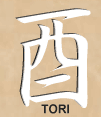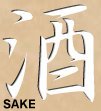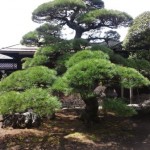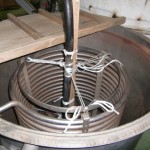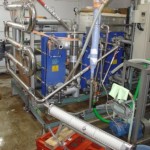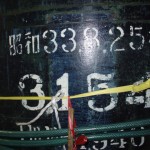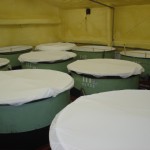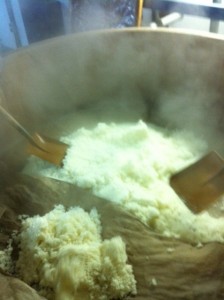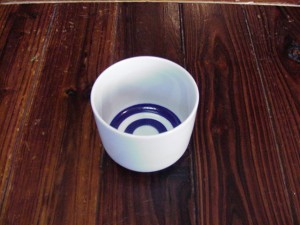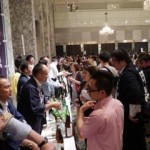Last month, I gave a presentation in Boston and then Chicago on trends and changes of late in teh sake world. In preparing and delivering that presentation, I realized and was otherwise told a few things about the state of the industry that are very worth observing.
Over the past decade or so, a very clear changing of the guard has taken
place, in that the past generation of brewers has handed the baton off to the next generation, seemingly en masse. It really does seem to me that everywhere in the industry, 60-year olds have just handed the operations of the company to their 30 to 40 year old sons (or daughters, in some cases).
Of course, 1300 companies could not be in generational sync like that. But it sure seems to me that a whole lot of them are. When I first got involved in the industry about 18 years ago, I was by far the youngest of any group I ran with. Now, I am almost without exception the oldest. ‘Course, I put on 18 years during these past 18 years, so that has to be factored in too! But still, the sweeping and clear-cut change in generation seems very apparent to me.
And as I took the time to look around and think about it, I realized that the generation of kuramoto (brewery owners) currently in charge lives, brews and sells in a totally different world than their fathers. The market is different. The economy is different. The brewing landscape too, is different. What worked before, just a scant couple of decades previous, will not work now.
I recall a few years ago visiting one of the largest ten brewers in the country. The president told me that back in the day, like the mid-70’s to mid-80’s, the phone would ring in the office.
“Don’t answer it,” said someone across the room. “It’s probably an order; we can’t fill it anyways.” In other words, sake was flying off the shelves faster than they could make it. Those were the days. But alas, they are long gone, ne’er to return.
And as such, philosophies, ways of doing business, and sensibilities all have changed for the better. How has this manifested itself? Partly in design. Labels are flashier, sexier, more attractive and infinitely more informative than in the past, methinks. (This does not necessarily mean they are easier to decipher to those that do not know much about sake, but one step at a time!)
Marketing methods and sales channels have expanded as well. Many brewers bypass the middleman these days, much more than in the past. Direct sales to consumers too, via mailers and the internet, are far more common as well. And brewers are much more visible at tastings, gathered in groups of one demographic or another – region, age group, philosophy and hair color are just a few groupings we see.
And finally, the sake itself has been changing. Perhaps not that much in terms of how they drink, but what the average brewer offers has expanded significantly, it seems. Many brewers experiment with more varieties of rice, various degrees of milling, myriad yeast types, and subtly different brewing methods, tweaked a bit here and there, than what we would have seen from their predecessors. It’s all very interesting, actually.
Everything from milling rates to new machines, from myriad permutations of variations on pasteurization to new rice types and combinations of the same – it is all enjoyably difficult to keep up with!
Undoubtedly, the younger generation now is technically more adept then the previous one. There is just so much more information readily available for those that want to learn. And many more owner-inherits are embracing brewing technology and know-how rather than just sales. And this gets them much more involved, leading to more variation.
One brewer yanked me aside after one presentation, and augmented the information I had just presented. He was, actually, one of the “hold-outs,” i.e. one of the older generation that had not handed off the reins yet. And he explained a nuance I had not considered before.
“Just 20 or 30 years ago,” he began,” we kuramoto had little say in what came out of our kura. Sure, we could decide how many tanks and for the most part what grades. But the selection of rice, yeast, and methods therein were pretty much left up to the toji. In some cases, it was entirely left up to the toji.
“And what we got at the end of the season was what we got. We just had t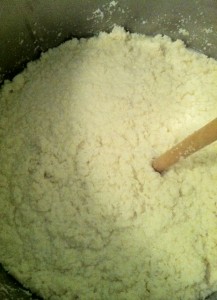 o go and sell it.” He almost seemed envious of what the current young’ns could do.
o go and sell it.” He almost seemed envious of what the current young’ns could do.
“Now, these guys can get in there, get their hands dirty, and even if they are leaving it up to the toji, they can have their say. They can dictate what rice is used, what yeasts are used, and what tricks-of-the-trade are used.” Very often, these “tricks” recommendations from friends and classmates at other breweries. It’s technology exchange in a modern format.
While this may not seem like a big deal, in the sake world, little things make big differences.
As a couple of concrete examples, I was told by one brewer in Shimane that they had never used a great rice called Omachi because it did not suit the way that the koji mold is propagated on rice by the local guild of toji. “Omachi does not like the heavier, slightly wetter koji that the Izumo guild uses.” So until this guy came along and took over, no Omachi. And no questions about it. Do not question the toji. Do not pass go; do not collect 200 yen.
But the young buck, just back from brewing school, knew how it could be done. And he made it happen, so now we have a wonderful Omachi sake from Rihaku.
Another example from up north was a young brewer that wanted to make a sake with no added yeast; in other words, just let it drop in from the ambient environment. Where did he get this cockamamie idea? One of his buddies in another part of the country has been making sake that way for decades.
“Please,” began his journeyman toji, “don’t ask me to do that!” But ask he did. And it ended up not only fine, but very interesting, and also gained a fantastic sales point along the way. Yet another fresh idea that never would have happened just a generation ago.
As such, we have a ton of very interesting new facets of sake to pay attention to and learn about these days, thanks in large part to a changing of the guard. Be sure to engage any brewer you might encounter on the sake trail along which you tread. You’re sure to be enlightened at least a bit.






